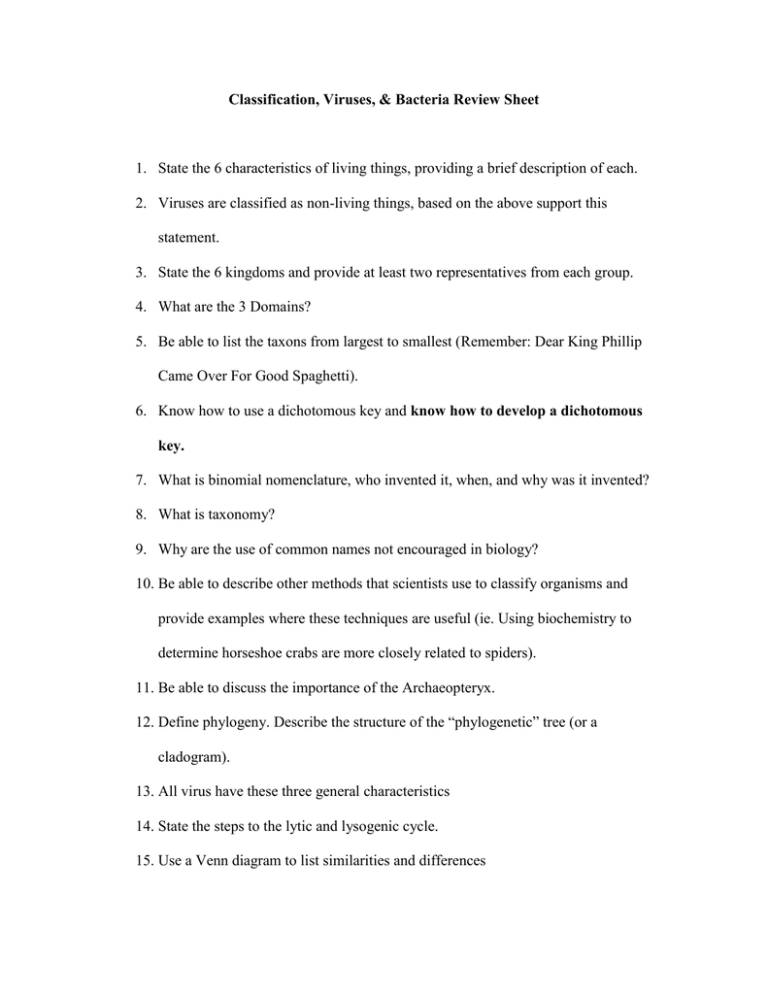Classification, Viruses, & Bacteria Review Sheet
advertisement

Classification, Viruses, & Bacteria Review Sheet 1. State the 6 characteristics of living things, providing a brief description of each. 2. Viruses are classified as non-living things, based on the above support this statement. 3. State the 6 kingdoms and provide at least two representatives from each group. 4. What are the 3 Domains? 5. Be able to list the taxons from largest to smallest (Remember: Dear King Phillip Came Over For Good Spaghetti). 6. Know how to use a dichotomous key and know how to develop a dichotomous key. 7. What is binomial nomenclature, who invented it, when, and why was it invented? 8. What is taxonomy? 9. Why are the use of common names not encouraged in biology? 10. Be able to describe other methods that scientists use to classify organisms and provide examples where these techniques are useful (ie. Using biochemistry to determine horseshoe crabs are more closely related to spiders). 11. Be able to discuss the importance of the Archaeopteryx. 12. Define phylogeny. Describe the structure of the “phylogenetic” tree (or a cladogram). 13. All virus have these three general characteristics 14. State the steps to the lytic and lysogenic cycle. 15. Use a Venn diagram to list similarities and differences 16. What is the difference between a provirus and a retrovirus. 17. HIV reproduces by which type of cycle? 18. Write a note on HIV treatments. 19. What was the 1st virus discovered? 20. Know the different structures of a bacteria. 21. Know the difference between a Prokaryote and a Eukaryote Chromosome 22. Know the difference between a Gram-positive bacteria and a Gram-negative bacteria and what causes the pink coloring. 23. How do bacteria acquire their energy & nutrients? 24. Know that there is a lot of genetic variation in bacteria due to mutations. 25. Know that bacteria can reproduce every 20 minutes by binary fission. 26. Know what Genetic recombination is. 27. List 4 reasons why bacteria is beneficial.






